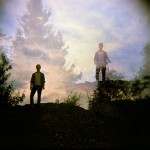Jeff Lynne is the most analytical rock star of his generation. Take the Electric Light Orchestra hit “Strange Magic”: there is a phaser on the rhythm guitar that cycles perfectly in time with the tempo of the song, no small feat in the tape era. I can almost hear an exhausted engineer saying, “That’s close enough, Jeff, it’s actually pretty cool how it’s almost in time!” and Jeff replying, “No, it has to be exactly in time with the song!” On the next pre-chorus an orchestra mimics the cycling of the phaser by doing rhythmic, sweeping glissandos — this is the stuff of an extraordinarily fastidious musician.
Lynne’s collected works are packed with these little analytical production touches — some charming, some overbearing. The ultimate studio rat, he was much more comfortable stretching the limits of 24-track analogue recording technology than taking his massive pop compositions on the road. Musicians of his ilk are generally most effective when either counterbalanced by some manic and outside-the-box bandmate or struggling against financial and technological limitations.
Left to his own devices, Lynne can be his own worst enemy: last year he rerecorded the bulk of his ELO-era hits to capitalize on advancements in digital recording technology (or to procure full ownership of licensable master recordings, it’s not clear if this was a motivating factor); the musical equivalent of George Lucas’ blasphemous, digital sprucing-up of the original Star Wars trilogy. Creative geniuses who strive their entire lives for total control often do their worst work when they finally get it.
I always pictured John Paul Jones as fitting this paradigm. He was the quiet, sensible member of Led Zeppelin, toiling in the shadows of his wild bandmates; the Apollonian counterweight to Bonzo, Plant and Page’s collective, Dionysian id. His versatile musicianship was the glue that held them together, particularly when the rest of the band sagged under the weight of drug abuse and fame. His fingerprints are all over the Zeppelin catalogue but his studio prowess is particularly evident on later material like the underrated In Through the Out Door.
Humble and averse to attention, Jones changed his appearance regularly to avoid becoming a recognizable public figure, and was known, rightly or wrongly, as the sober intellectual of the group. To the world, while the rest of Led Zeppelin was getting hammered and violating groupies with aquatic creatures, Jones was in his hotel room studying modes and practicing the mandolin. Bonham was the drunk caveman drummer, Page the heroin-abusing dark-art practitioner, and Plant the golden sex god — Jones was simply the happily married, classically trained music professor.
But John Paul Jones’ post-Zeppelin career has illustrated the deficiencies of such stereotypes, particularly his new experimental project with Norway’s Helge Sten, aka Deathprod. It’s called Minibus Pimps (a name that conjures many things, none of them good) and is an interesting move for a man who can presumably collaborate with whomever he chooses. Sten is a prolific producer and purveyor of what he calls “Audio Virus” — using vintage electronics to alter sounds beyond recognition.
Cloud to Ground is basically a half hour of dissonant noise. It’s not a Christmas album, or a duets cash-grab, or a standards retread. It’s a 30-minute sound-bath. There are delay-regeneration swells, plucks and chimes that sound a bit like Cage’s prepared piano as well as unidentifiable stringed instruments. They form a cloud of sound, almost like reverb reverberating or delay delaying — it’s virtually all noise and no signal, and I guess that’s the point.
The album was recorded live using Symbolic Sound’s Kyma System, basically an extremely high-end piece of sound-design hardware with its own software and operating system. This is the tool that well paid engineers use to create soundscapes and effects for films like Wall-e and Finding Nemo. So while Minibus Pimps is an ambient noise project, it’s an extremely high-fidelity one. If you listen on good speakers or headphones, the cloud begins to morph. Layers and folds emerge and the noise separates from itself into sub-categories.
It’s a dynamic and spatial record. If you listen passively it disappears at times because the quiet bits are so quiet; then it startles you when the ambience swells and explodes. I imagine that Jonesy and Deathprod insisted on having the record only lightly compressed and probably loathe the idea of anyone listening on laptop speakers. It’s an active listen, to be sure.
On its own, though, I’m not sure Cloud to Ground is a very remarkable recording. It’s sonically interesting (particularly the fidelity), but it’s not dissonant enough to be truly unsettling or textured enough to keep the listener’s attention for the duration. And while it has evocative moments, its main emotional construct seems to be, simply, foreboding. Perhaps it would work better as the soundtrack to something like Event Horizon or Beyond the Black Rainbow — visual accompaniment, even suggested, could flesh out some of its content and hold the attention for longer stretches. But without that, it’s one-note — and the note isn’t very compelling. In fact, I’d wager there are crusty kids in my neighborhood tinkering right now in their basements and bedrooms with every type of gear, finding an innovative path for noise art.
What’s amazing, though, is that John Paul Jones chose to make this record at all. While the Jeff Lynnes of the world are lounging in Malibu, reworking and repackaging their old hits, the greatest rock bass player ever is hanging out with a Norwegian tweaker who goes by the name Deathprod. He’s hungry for new musical experiences and, at 68 years old, not afraid of taking chances.







